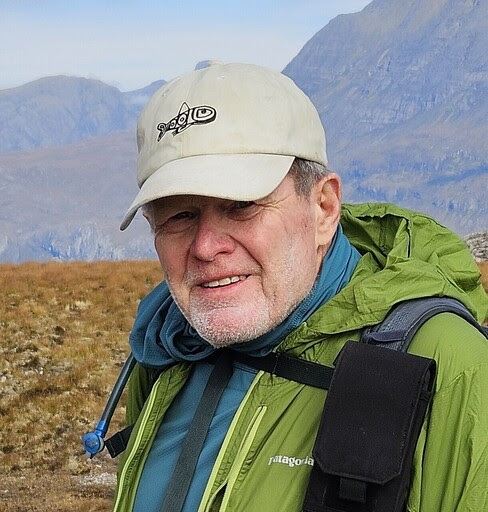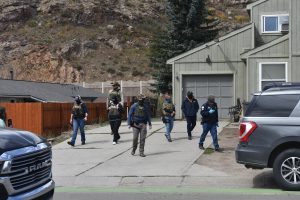Get Wild: Leaders are crucial in emergency situations
Get Wild
When there is an accident or injury in the backcountry, the best opportunity for a quick resolution is if the rest of the group can pull off a rescue, or at least get the victim to a safe location and stabilize any life or limb-threatening injuries. Just as with any project that is to be accomplished by a group of people, it is usually advantageous to have one individual in charge of the operation. By having a competent leader, the group has the advantage of directed efficiency and coordination toward a common goal.
Leading a melange of participants with varying and perhaps unknown skills who have been thrown together by circumstance in a high-stress situation is different than leadership in the workplace. When a search and rescue team goes into the field, a field team leader is assigned. A site leader is also established to manage multiple teams at a rescue site. That person has the advantage of familiarity and common knowledge, having trained and worked with his teammates. The person knows their skill sets and capabilities, what they have in their pack and that each has already committed to the goal of saving a life. They know what they can do as a team.
Much has been written about the qualities of superior leadership in industry and government, but when an emergency arises, only some of those qualities apply. One key reason is that time is of the essence, and there is no opportunity to manipulate or maneuver your team into an organized, effective unit. There may be only one chance for success. That said, many accepted leadership qualities are important for the impromptu rescue leader:
- Courage – A leader needs to stand up and take charge. By taking ownership of the problem, he or she faces danger, fear and difficulty without regard to personal vulnerabilities.
- Commitment – Once they’ve accepted a goal, a strong leader will push toward the goal until it is accomplished.
- Composure – Remaining calm in the face of adversity will save time and have a beneficial effect on everyone, including the victim. Take a deep breath and concentrate on the task at hand.
- Experience and training – When the leader is competent and confident because of previous experience and comprehensive knowledge, the rescue operation has an inherent head start.
- Positive attitude – A healthy optimism, concern for the safety of the victim and the crew and the gumption to move forward in a tough situation will inspire. Leaders need to park their ego at the door and provide respectful control to the group.
- Communication skills – The ability to verbalize commands and instructions clearly and concisely, as well as the ability to listen to and evaluate criticisms or objections from teammates, is critical.
- Delegation – An effective leader will delegate specific tasks that are attainable and relevant, then let the group complete those tasks without micro-managing them.
- Decision-making – Critical thinking, plan creation and prioritizing rescue components must be done in rapid sequence while maintaining the ability to adapt the plan to changing situations.
Who in your group or crew has some or all of these qualities? Will that person have the courage to step up? A serious group heading into serious terrain might consider pre-planning the rescue leadership position.
For a leader to be effective in an emergency situation, there needs to be some consensus. Just because someone claims to be an expert or talks loudly does not mean that they are the best leader. Is one individual the best person to complete an important task, like the transceiver search in an avalanche rescue? Maybe that person should not be selected as leader.
Stop, think, observe and plan. As a group, assign a leader that has the necessary skill set. If possible, the leader should be “hands off” as far as completing tasks. If the leader gets hung up on a task, it will delay or hinder the ability to perform the primary function of leading. The leader needs to track the big picture, direct the participants and be ready to modify the plan. The leader must be forward-thinking and consider any options.
Once a leader is determined, it is important that they have the full respect and cooperation of the whole crew. There should be a clear objective, and all group members need to work toward that objective in a coordinated effort.
We hope you never have to rescue one of your companions. If you do, remember that having a leader and a plan provides the best chance for success.
“Get Wild” publishes weekly in the Summit Daily News. Greg Foley has been a fielding member and mission leader with Grand County Search and Rescue since 1984, participating in over 1,500 search and rescue incidents. He has also served for 17 years as a Colorado Search and Rescue Association state coordinator and is an instructor for the Colorado Search and Rescue Association search management course. In a previous life, he was a small business owner in the recreation industry and resides in Fraser.


Support Local Journalism

Support Local Journalism
As a Summit Daily News reader, you make our work possible.
Summit Daily is embarking on a multiyear project to digitize its archives going back to 1989 and make them available to the public in partnership with the Colorado Historic Newspapers Collection. The full project is expected to cost about $165,000. All donations made in 2023 will go directly toward this project.
Every contribution, no matter the size, will make a difference.









